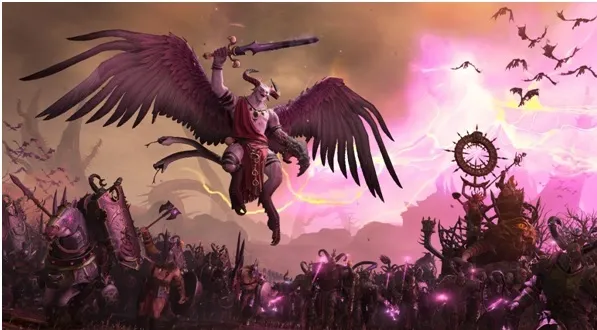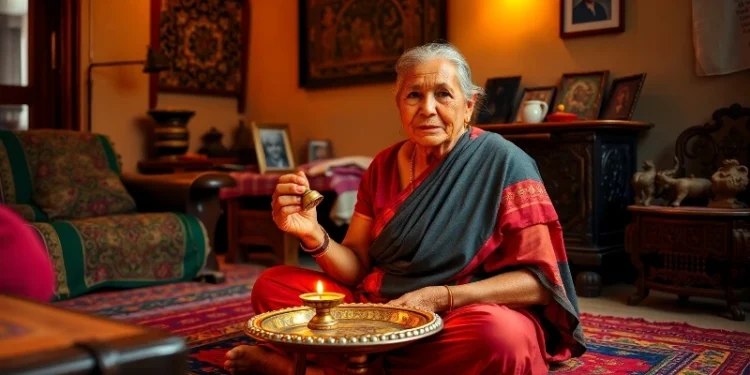Cultural Pride of Mountains, Hill and Terai Region of Nepal:
Therefore, cultural heritage is the valued property of a group o society that is handed down from generation to generation, maintained in the present, and left for the benefit of the future generation. Cultural heritage is formed by the creativity of the people. They have historical, artistic, and scientific value. Nepal is rich in culture and cultural heritage. Some of the cultural heritage of Nepal are listed below:
Traditional Ornaments:
Dhungri, Bulaki, Fuli, Kali, Tilahari, Naugedi, Sirbandi, Kampani-Ma!a7 Chandra-Har, Aunthi (Ring), Nathuni, Bicchiya, Mugamaia, Hasuli, Cheptesun, etc.
Traditional Song/Dances :
Deuda, Balan, Sangini, Maruni, Kaura, Ghatu, Selo, Sakelasili, Syabru, Jhijhiya, Samachakewa, Dhan-Nach, Dhangdhane Nach, Lakhe Nach, Jhangad Nach, Satar Nach, Chyabrung, Bhairab Nach, Sawai, Sakhiya, Sorathi, Cha Chari, Hungkeli etc.
Folk Musical Instruments:
Panchai-Baja (Sahanai, Tyamko, Damaha, / Nagara, Jhyali), Sarangi, Binayo, Murchunga,Tungna, Dhol, Jhyamta, Yalambar, Damphu, Mridang, Dhime, Ektare, Majire, Bansuri, Damaru, Madal, Murali, etc
Bastukala (Architecture):
Pagoda style (Temple of Pashupatinath, Changu Narayan, Nyatapole te), Stupa style (Maya Devi Temple, Swayambhunath, Boudhanath), Chaitya, Shikhara style (Krishna Mandir ), Gumbhaj, Mugal (Janaki Mandir), etc.
Murtikala(Sculpture):
They include Metal, Stone, and Wooden Sculptures. Birupakchya at Pashupati, Budanilkantha, Idols of Lord Buddha and various Gods and Goddess, carved idols of Gods and Goddess in the temples and palaces, etc.
Traditional Products:
Khukuri, Nepali Kagaj, Radi, Pakhi, Gundri, Nanglo, Dalo, Sukul, Khadiko Kapada, Dhaka Topi, Dhaka Kapada, Dhaka Khasto etc.
Traditional Costumes:
Bhoto, Daura-Suruwal, Topi, Kachhad, Dhoti, Kamij, Gamchha, Pagari, Pangden, Anggi, Bakkhu, Gado, Ghaiek, Tikiya, Bona, Petani, Makhali, Hakupatassi, Gaman, Klatoli, Gangar, Lehenga, etc.
Traditional Rituals:
Chhaiti Nawaran, Pasni, Chhewar, Bratabandha, Bibaha, Chi, Bhim, Janku, Ratharohan, Ghewa, Mundan, Nwangi, Manghena, Garva Puja, Shuddhain, Hakika, Khatana, Janaja etc
Nepal is rich in cultural heritage. The above-mentioned are only some examples. We must find, protect, preserve and promote them.
In the conclusion
Nepal is a land of diverse geography, climate, cultures, and religions. There are more than 125 ethnic groups or nationalities, most of them having their way of life, cultures, traditions, religions, and festivals. People’s lifestyles are very much influenced by geographical and climatic conditions.
Life in the Mountains is comparatively hard than in the Hill and the Terai. Mountains are thinly populated, whereas the Terai is heavily populated with almost 50 % of the total population. People in the Mountain are mostly Buddhists, their main festivals are Lhosar and Buddha Purnima.
Houses in the Mountains are usually single-storeyed and flat-roofed and foods are, roti, chyakhla, potato, and meat. People in mountains wear thick woolen clothes and keep yaks, sheep, and goats. Mostly different ethnic groups of people have their way of life living in the Hill region. Life in the Hill region is comparatively better than in the Mountains.
The majority of the people in Hill are Hindus followed by Buddhists and Kirats. Dal, Bhat tarkari, and achar ate the popular dishes enjoyed in the Hill. People in the Terai mostly eat roti, rice, and Darkrai made of various vegetables. People in Terai mostly follow Hinduism followed by Islam. People in Terai wear thin cotton clothes like a dhoti, kami, kurta, pajama, etc.
Related Posts and terms about the culture of Nepal
ministry of education and culture Nepal
how and when a culture of foreign employment started in Nepal
Nepali folk culture
a famous culture of Nepal
Gurung culture of Nepal
Culture of Nepal
Nepal, formally the Federal Democratic Republic of Nepal, is a landlocked nation located between two giant nations, India and China in South Asia. With a total area of 1,47,181 Square Kilometers, it is the 93rd largest country in the world.
Apart from the immense natural beauty that Nepal endorses, it is one of the very few countries blessed with the richest cultures in the world. Culture is broadly called the way of life of an entire society and this statement truly holds in the case of Nepal as every aspect of life including food, clothing, manners, and rituals is guided by a common belief.
Religion
Once famous as the world’s only Hindu Kingdom, Nepal is now a secular state. It is a complex yet beautiful tapestry formed by the combination of Hinduism, Buddhism, and other religions. According to the census of 2011, 81.3 percent of the Nepalese population is Hindu, 9 percent Buddhist, 4.4 percent Muslim, and only 3 percent karats. Though Nepalese people follow different religions, yet they live in harmony and respect each other’s religion equally. Religious coherence as found in Nepal is perhaps an exceptional example to the world.
Language
The official language of Nepal is the Nepali language, formerly known as Khaskura. Almost 44.6 percent of Nepalese people use this language as their primary language. Other than that, there are as many as 123 languages spoken by different communities in Nepal. People from the Himalayas speak Nepali while people from the Terai region speak Maithili, Bhojpuri, and Hindi as well. Along with that, English is also widely spoken among people involved in the tourism sector or media.
Art
Nepali art and architecture are exceptional and divine. It is rooted in the daily practices of people and can be easily found in temples, architecture, and on the design of religious objects. Thangkas, the most popular form of painting in Nepal, go back to the 14th century. Common refrains of Thangkas include an image of Buddhist figures, mandala plans, etc. yet another form of art in Nepal is the Bronze figure. Sometimes alloyed with copper, these paintings usually represent religious gods or mythical figures.
Food
There is no distinct cooking style in Nepal. The food, cooking style, and habits differ depending on religion. Mostly influenced by Indian and Tibetan styles of cooking, Nepalese adopt various cooking styles. However, Thakali cuisines and Newari foods are authentic Nepali foods. The regular Nepali meal comprises dal, bhat, and tarkari also known as lentil soup, boiled rice, and curried vegetables respectively. Similarly, momos deserve the mention as it is one very popular food in Nepal irrespective of religion.
Dress
The traditional Nepali dress is Daura – Suruwal; also termed Labeda Suruwal. This dress is unique in its way. The Daura has eight strings that serve to tie itself around the body. Also, it has five pleats signifying Pancha Buddha or Pancha Ratna. Apart from that, the clothes of people differ according to the geographical belt. People of the mountain wear thick and long woolen clothes called Baku and Doha while people of Terai wear Dhoti and long shirts called Kurta.
Customs
The ethnic diversity of Nepal makes room for a vast set of customs. The shared custom of Nepalese is that they do not eat beef. There are many reasons for that. First of all, the cow is the national animal of Nepal and people have huge respect for it. Secondly, Hindus worship the cow. In the case of marriage, still, the arrangements are decided by the parents instead of by a boy or girl. In some societies, there are still practices of superstitions like Shamanism. These all are the customs of Nepal.
Hence, the culture of Nepal is formed by varied customs, arts and crafts, religion, language, etc. Nepal is the richest country in the world in terms of culture there are a lot of cultures rooted in the communities of Nepal.
Related Posts and terms about the culture of Nepal
the growing culture of impunity in Nepal
Nepali culture and geography
a Hindu culture of Nepal
Himalayan society and culture of Nepal
information about the culture of Nepal
influence of western culture in Nepal
Author: Asmita Sharma






